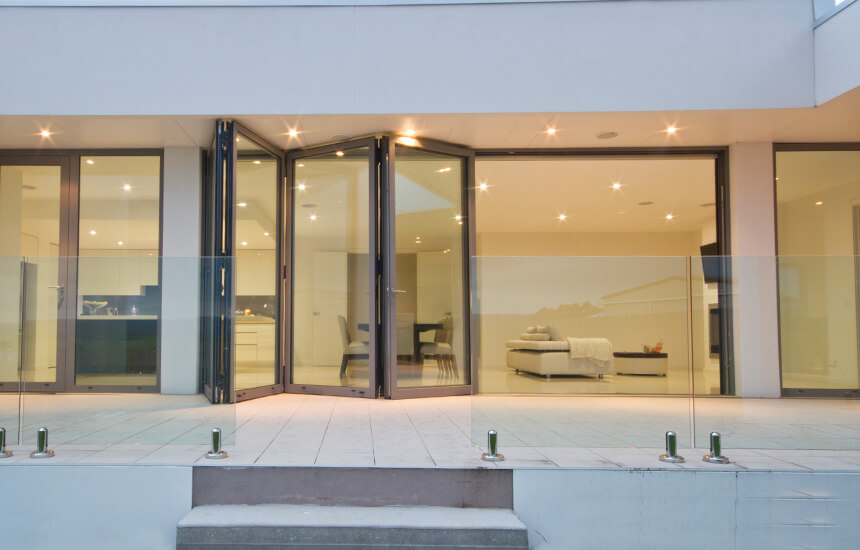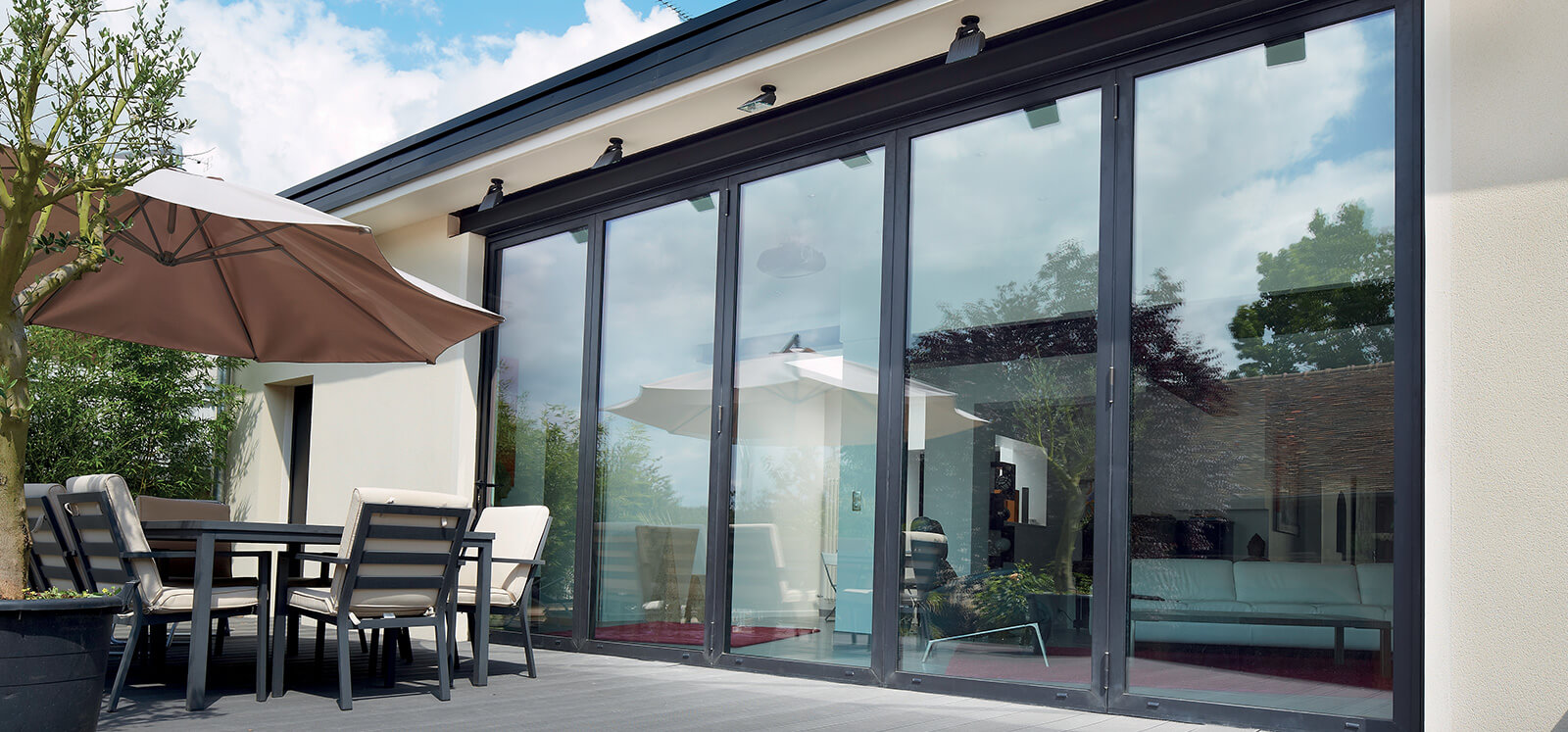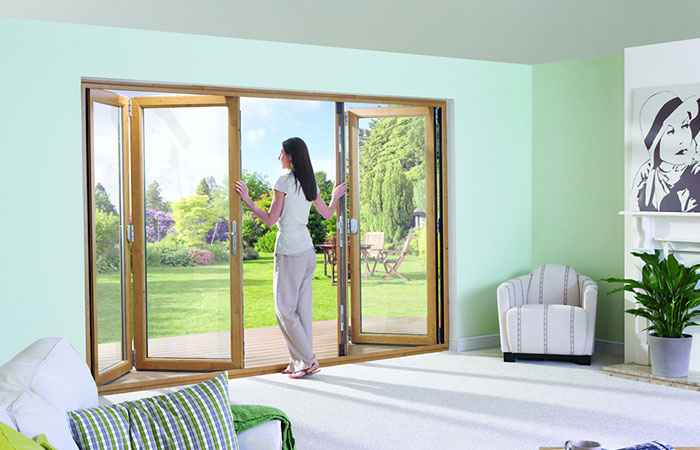What is the best type of bifold doors?
The best type of bifold doors is aluminium bifold doors. Aluminium is super versatile due to its strong nature but is also extremely lightweight, so aluminium is the ideal choice for creating the desired slimline aesthetics of bifold doors, compared to uPVC.
Do bifold doors open in or out?
Bifold doors can open inwards or outwards, depending on your specific requirements. However, the most common way a bifold door open is outwards, as there tends to be more space outside for the panes to stack compared to inside the home.
Can bifold doors open around corners?
The innovative design of bifold doors means that they can fully open around corners with no stationary corner post. So if you have an orangery or conservatory with bifold doors, you can have a complete view of your garden with no sightlines when the doors are totally open!
Do you need planning permission for bifold doors?
In general, planning permission is not usually needed for the installation of bifold doors as they fall under permitted development rights. This is because they typically have minimal impact on neighbours and the overall look of your home. However, it's important to consider that requirements may vary based on factors like property type, location and local regulations.
To ensure compliance, it is recommended to consult with your local planning authority or seek professional advice regarding the specific requirements of the situation. By doing so, you can enjoy the benefits of bifold doors without additional planning applications.
Are bifold doors high maintenance?
Bifold doors are typically low maintenance, usually requiring cleaning and servicing once a year for most homeowners. However, in areas with high levels of dust or pollution, it is advisable to clean and service them every 3-6 months to prevent the accumulation of salt, dust or pollution that can impact their appearance and performance.
The frames, often constructed from durable materials like uPVC or aluminium, are resistant to the elements. Maintaining their longevity and performance with minimal effort involves routine cleaning using mild soap and water, occasional lubrication, and of course following the manufacturer's guidelines.























